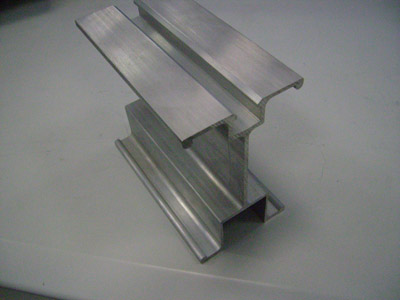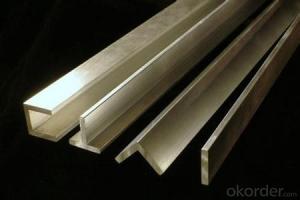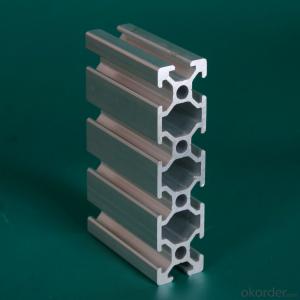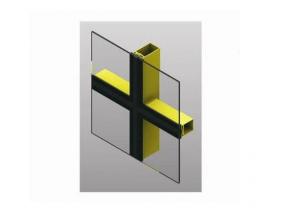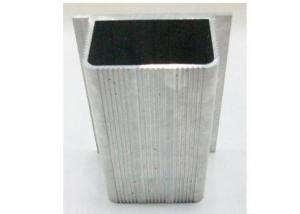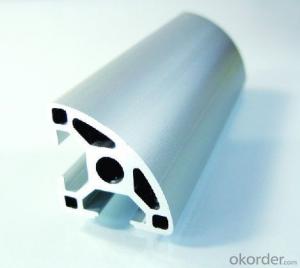Architectural Aluminum Extrusion Profiles
- Loading Port:
- China Main Port
- Payment Terms:
- TT OR LC
- Min Order Qty:
- -
- Supply Capability:
- -
OKorder Service Pledge
OKorder Financial Service
You Might Also Like
Aluminium Profile
Our advantages:
1)we can provide"one- stop service from melting,extruding,surface treatment,machining,welding,assembling to mould design & building.
2)we have a good capacity of precise machining,cnc machining.
3)we can provide good quality with reasonable price.
Products:
Description | Aluminium Profiles |
Alloy | Al 6063 T5 /T6 or 6061 or 6005 or as per customers' need |
Finish | Anodizing or powder coating with various colors |
Packing | Foam sheet,poly bag,plastic bag,carton |
Brand | YMJ |
Original place | |
Certificate | ISO9001 |
Equipments:
7extruders,2 six meters long anodizing lines,1 twelve meters long anodizing line(including dyeing & electrolysis).1 powder coating line,5 melting lines,12 CNCs(including 2 machines which can mill 6.5m long profile),10 argon arc welding machines and multiple machines for cutting,drilling,punching,milling,shearing and bending,2 spectrum scanners,1 projective instument,1 extension test machine,1 mechanical property tester,1 Rohs tester and 1 metallurgical microscope.
Service:
We're a well- established manufacture for aluminium products,we're confident we can give our customers complete satisfication.
We can provide good quality with reasonable price.
- Q: Can someone give me a direction? Thank you
- Guangdong now has a lot of aluminum factory, and the price is very low
- Q: It is now the most urban rail trains, as well as the manufacturing methods and processes of large parts profiles used in the manufacture of CRH3 type emus.
- Extrusion; preheating; mold preheating; extrusion quality inspection (optical projection measurement); cutting; heat treatment; quality assurance tests; mechanical properties; cross sectional metallography; electrical conductivity) shipment..
- Q: This question asks for methods to protect aluminum profiles from water damage during the installation and usage phases.
- <p>To prevent water damage to aluminum profiles during installation or use, follow these steps: 1. Ensure the aluminum profiles are properly sealed with a high-quality sealant to prevent water penetration. 2. Use corrosion-resistant fasteners and hardware to avoid rusting. 3. Install drainage systems to direct water away from the profiles. 4. Regularly inspect and maintain the profiles to identify and repair any damage promptly. 5. Avoid installing profiles in areas with high humidity or direct exposure to rain. 6. Use protective coatings or paints that are water-resistant and compatible with aluminum. 7. Keep the profiles clean and free from dirt or debris that can trap moisture. By following these precautions, you can significantly reduce the risk of water damage to aluminum profiles.</p>
- Q: This question asks about the strength and suitability of aluminum profiles for outdoor applications.
- <p>Yes, aluminum profiles are strong enough for exterior use. They are lightweight, durable, and resistant to corrosion, making them ideal for outdoor applications. Aluminum profiles can withstand various weather conditions and maintain their strength over time. They are also low-maintenance, as they do not rust or rot, and can be easily cleaned. Additionally, aluminum profiles can be anodized or powder-coated for enhanced durability and resistance to UV rays, further ensuring their suitability for exterior use.</p>
- Q: Are aluminum profiles suitable for use in exterior wall insulation systems for residential buildings?
- <p>Yes, aluminum profiles can be used for exterior wall insulation systems in residential buildings. They are known for their durability, corrosion resistance, and low thermal conductivity, which makes them ideal for creating thermal barriers. Aluminum profiles can support the structure of the insulation system, providing a stable framework while also contributing to energy efficiency by reducing heat transfer. However, it's important to ensure that the profiles are properly sealed and insulated to prevent thermal bridging and to maintain the overall insulation performance of the building envelope.</p>
- Q: This question asks about the various types of aluminum profiles that are utilized in interior design applications.
- <p>Aluminum profiles are widely used in interior design for their strength, durability, and aesthetic appeal. Common types include: 1. Linear Profiles for creating sleek lines in furniture and architectural elements; 2. Structural Profiles for load-bearing structures like beams and columns; 3. Decorative Profiles for ornamental purposes, such as moldings and trims; 4. Frame Profiles for framing pictures, mirrors, and other wall-mounted items; 5. Slatwall Profiles for versatile display systems in retail spaces; 6. Handrail Profiles for stairways and balconies, ensuring safety and style; 7. Window and Door Profiles for modern, lightweight, and energy-efficient applications. Each type is chosen based on the specific design requirements and functional needs of the space.</p>
- Q: Can aluminum profiles be used for security doors and windows?
- Yes, aluminum profiles can be used for security doors and windows. Aluminum is a lightweight and durable material that can withstand force and resist corrosion. It can be customized to include additional security features such as multi-point locking systems, reinforced frames, and impact-resistant glass. Additionally, aluminum profiles offer a sleek and modern appearance, making them a popular choice for security doors and windows in residential and commercial properties.
- Q: Can aluminum profiles be used for access platforms?
- Access platforms can indeed make use of aluminum profiles. Aluminum, a material that is both lightweight and durable, finds wide application in the construction and industrial sectors. Renowned for its corrosion resistance and superior strength-to-weight ratio, aluminum is highly suitable for access platforms. The versatility of aluminum profiles allows for easy fabrication into diverse shapes and sizes, catering to the unique needs of an access platform. Furthermore, aluminum possesses the added benefits of being non-magnetic and non-sparking, rendering it advantageous in specific environments. All in all, the utilization of aluminum profiles for access platforms ensures a secure and dependable solution.
- Q: What are the limitations of using aluminum profiles?
- Some limitations of using aluminum profiles include its relatively low strength compared to other metals like steel, making it less suitable for heavy-duty applications. It is also prone to corrosion in certain environments, requiring protective coatings or treatments. Additionally, aluminum profiles may not be as readily available or cost-effective in some regions compared to other materials.
- Q: How do you prevent galling or seizing with aluminum profiles?
- To avoid galling or seizing in aluminum profiles, several steps can be taken: 1. Apply lubricant: Use a suitable lubricant on the contact surfaces of the profiles. This reduces friction and heat, preventing galling or seizing. Be sure to choose a lubricant specifically made for aluminum to avoid any negative reactions. 2. Utilize surface treatments: Implement anodizing or protective coatings on the profiles. These treatments create a barrier between the profiles, minimizing direct metal-to-metal contact and decreasing the likelihood of galling or seizing. 3. Ensure proper design and materials: Make sure the profiles and their mating components have sufficient clearance and a proper fit. Avoid tight tolerances that can cause excessive contact pressure, which increases the risk of galling. Additionally, select materials with compatible hardness and avoid using dissimilar metals that may lead to galvanic corrosion. 4. Keep things clean: Maintain cleanliness by regularly cleaning the profiles and their mating surfaces, removing any dirt, debris, or contaminants. Foreign particles can increase friction and contribute to galling or seizing. 5. Implement regular maintenance: Establish a preventive maintenance program that includes periodic inspection, cleaning, and lubrication of the profiles. This helps identify any issues early on and ensures smooth operation over time. By following these preventive measures, the risk of galling or seizing in aluminum profiles can be minimized, resulting in longer-lasting performance.
Send your message to us
Architectural Aluminum Extrusion Profiles
- Loading Port:
- China Main Port
- Payment Terms:
- TT OR LC
- Min Order Qty:
- -
- Supply Capability:
- -
OKorder Service Pledge
OKorder Financial Service
Similar products
Hot products
Hot Searches
Related keywords

